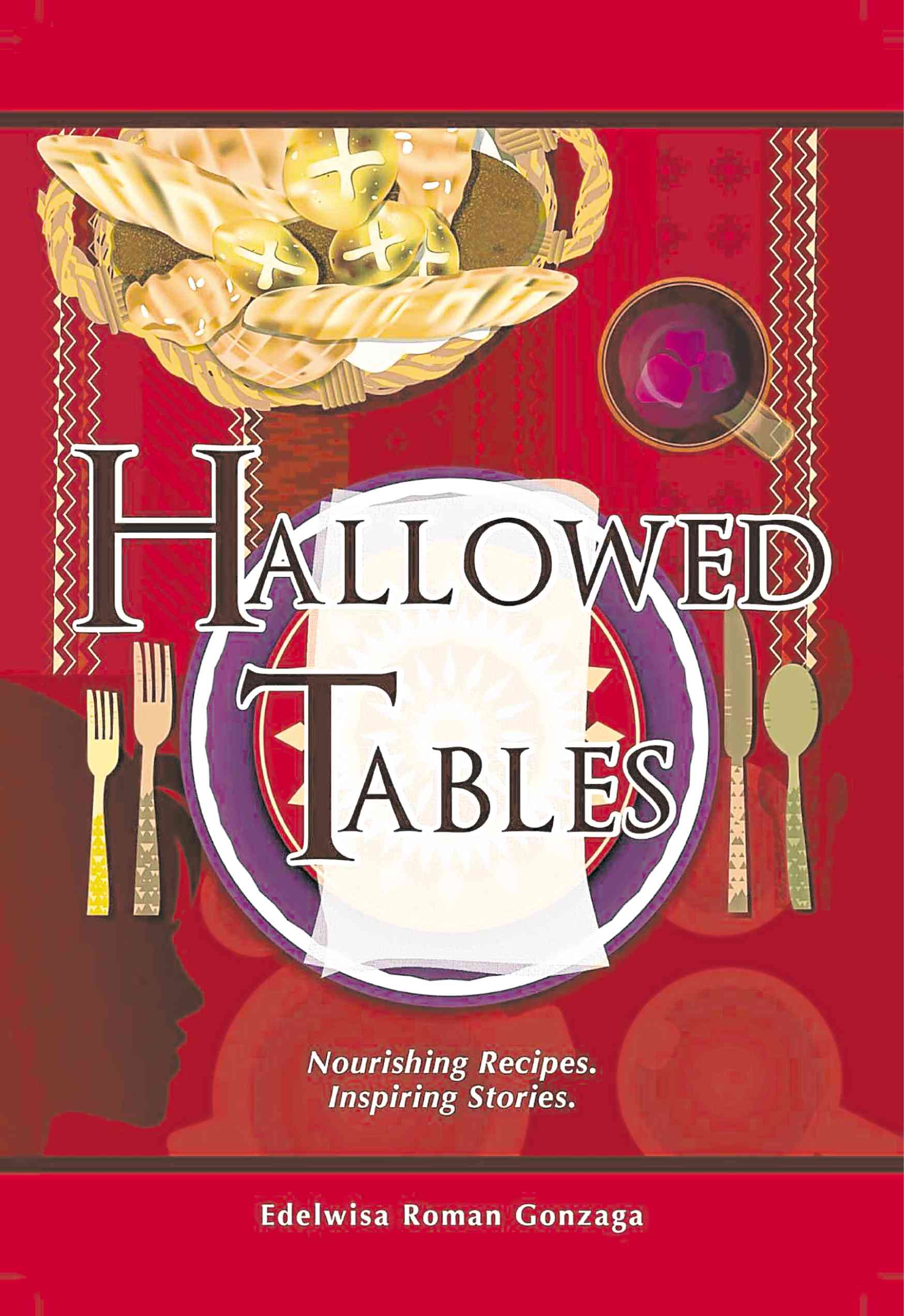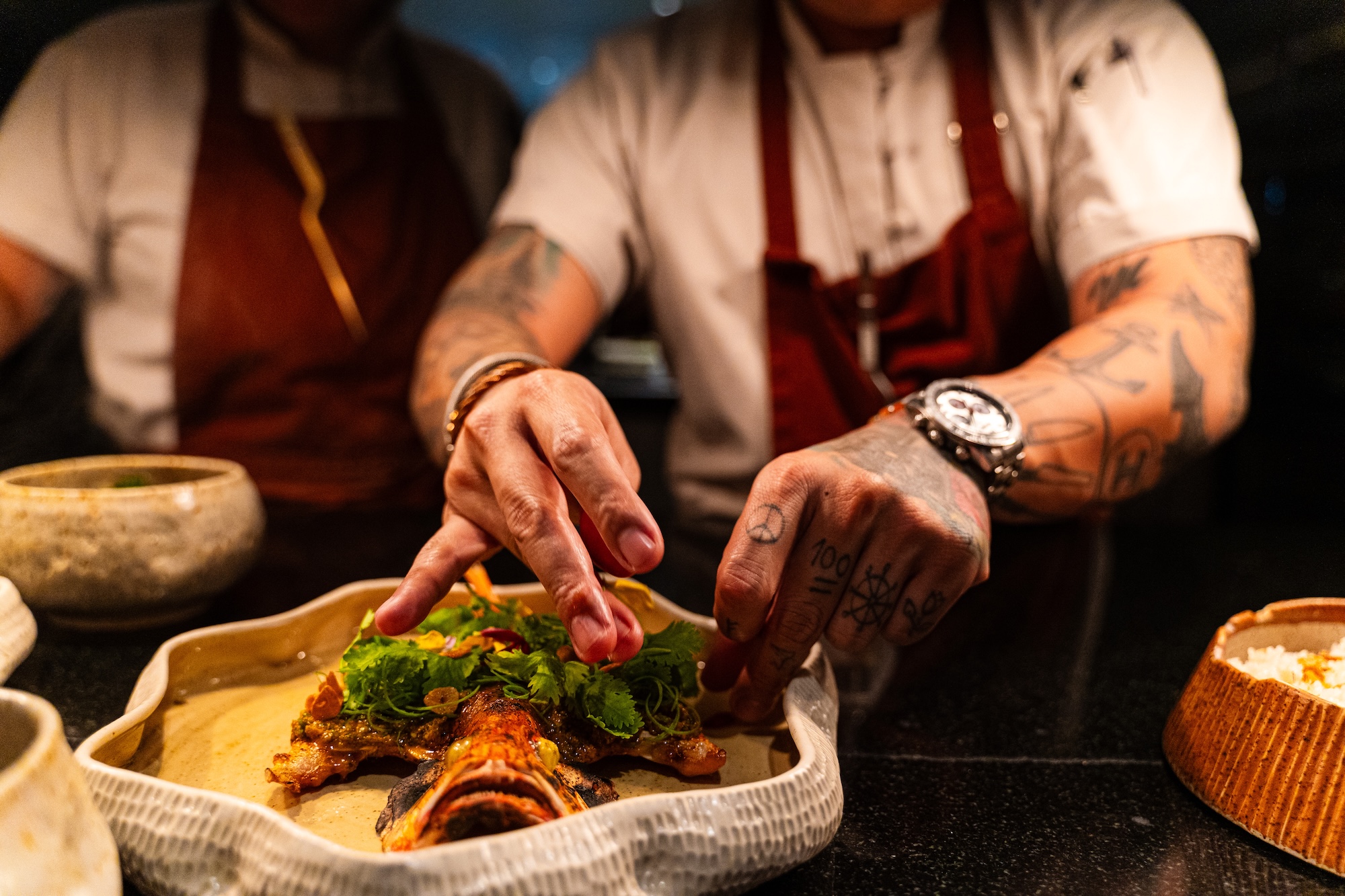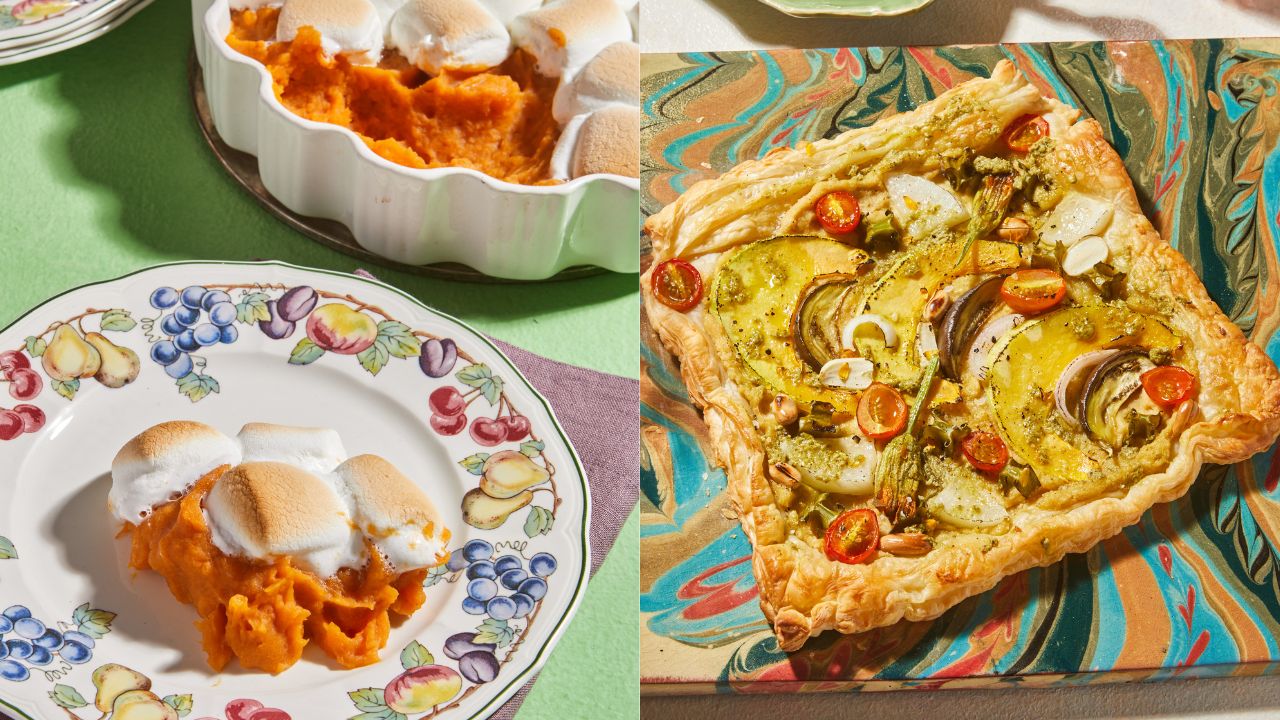
You may guess from the book’s title, “Hallowed Tables” (New Day Publishers, 2018), that it’s about food’s connection to religion. But scanning the digital copy (since the book was still being printed), we realized the contents yielded surprises.
It carries more than recipes or quotations from the Bible. It is a celebration of traditional cooking through the stories of 21 women, married to ministers, residing in the minister’s house or manse, in the country and abroad.
It is a wealth of information about traditional cooking, about certain ingredients in their different names, and adaptations that spouses of pastors make when they cook far from the mother country.
Author Edelwisa Roman Gonzaga held a corporate job in communications and telemarketing. She must have been inspired by other cookbooks featuring women of the manse and their recipes, such as “The Manila Cookbook,” published in 1919 by the Guild of Central Methodist Church and Women’s Auxiliary of the Union Church of Manila, and the 1984 Centennial Celebration Cookbook of the Lynden United Methodist Church.
Edelwisa and her husband, Rev. Conrado Medina Gonzaga, are based in Lynden, Washington, US.

Traditional Filipino cooking
Josephine Victoria of Capas, Tarlac, serves bopis to Aeta scholars using sulib (also called paros) or freshwater clams.
Hannah Domantay of Meycuayan, Bulacan, cooks the lauya of Tatay, Rizal—pork leg with canela (cinnamon bark), sangke (star anise) and luya (ginger). She also cooks her husband’s favorite chicken and pork pochero.
Helen Tolentino of Angono, Rizal, shares a “taal na Taytay” (truly Taytay) recipe called barutak or shrimp sinigang. It is also called pinugutan because the shrimp heads are removed and pounded, with the juice added to the broth. Ripe sampaloc is the souring agent.
Her other recipe is adobong matanda, where the chicken pieces, after the dish is cooked, are fried.
Mina Payumo of Bataan gives her husband’s recipe of ginisang galunggong transformed into sinigang sa calamansi.
Vonnel Yinaaria of Las Piñas advised how KBL (kadios, baboy, langka), the Visayan buto-buto, should be cooked using firewood.
Lina Bautista of Quezon City dug deep into her Abra roots and came up with dinendeng con bagnet and ensaladang bulaklak ng katuray (corkwood tree blossoms).
Mehden Cruz of Tatay, Rizal, has a restaurant called Zackubo where she uses fresh strawberry in roasted pork. She got the idea from her La Trinidad hometown that uses strawberries as souring agent. She also serves “adoboberry” and “menudoberry.” She adds Korean kimchi to her herbed chicken stew.
Kathy Kirkelie from Lynden, Washington, offered her grandmother’s German pancake recipe called blinna.
Omega Raimundo from Melbourne put her biotechnology background and baking savvy to good use when she opened Omega Star Cafe, which sells Filipino pastries. Her best-selling items are Brazo de Mercedes and Ube Macapuno cake.
Carol Mendilla of the Central United Methodist in Manila decided that she would do an Ilocano padigu, or “sharing of food,” by giving her recipe of baked chicken stuffed with shiitake mushrooms and cheese.
Fe Sta. Maria Stepehen, who married an Indian pastor, gave her rice pulav and sautéed red lentils recipe. Red lentils are what one should use, she wrote, when pressed for time, because they don’t need to be soaked overnight.
Debbie Paghiligan of Morong, Rizal, said we should taste the pride of Morong, Camillus Manok, and she gave her ensalada llamado containing singkamas and cucumber to eat with it.
Nigerian Taiwo Raji Rich, who stays in Antipolo, contributed the West African Jollof Rice, a celebratory rice with tomato stew with as many versions as our adobo and eaten with grilled chicken and saba.
If you are ever in Malabon, look for Master Garden Resto and order its kaldereta, writes Divina Cruz of Bataan. It is a recipe of her cousin, Pepe, who gladly gave its secrets—cooked with no water, with peanut butter added.
Concepcion Palma, in Sydney, Australia, still cooks her tokwa con carne with shrimps.
Ritzel Santos, in Ontario, Canada, loves shrimps and made pasta with shrimps, one of her young family’s recipes.
When Maria Joan Cabe of Bulacan was widowed, she ably took over her husband’s ministry. She has an interesting Pinoy kimchi that uses tamis-anghang (sweet-spicy) catsup.
Luz Barlik of Canada contributed her Honey Wings dish.
Carol Garcia of Taytay grew up with the family’s Charlie’s Bakery. But instead of doing “pan de red” (bread with red filling, also called pan de regla), she contributed her tochong bangus that uses red fermented tofu called okiam.
Joy Valera of Washington State does a pares of pulled pork. She slow-cooks pork butt or shoulder (kasim) with apple cider vinegar, mushroom mix, ketchup and sugar.
“Hallowed Tables” will be available in major bookstores first week of October. Contact New Day Publishers, tel. 9288046; e-mail [email protected].
E-mail the columnist: [email protected].
Josephine’s Bopis na Sulib
½ c cooking oil
50 g garlic, peeled and chopped
100 g onion, peeled and sliced
100 g ginger, peeled, julienned
4 k sulib (paros or freshwater clams)
16 g seasoning
150 ml patis (fish sauce)
100 g green chili
1 ½ tbsp ground pepper
½ k carrots, finely chopped
15 eggs, beaten
Heat oil in pan. Sauté garlic, onion, ginger and sulib. Add seasoning, patis, green chili, ground pepper and carrots. Finally, pour the beaten eggs. Serve hot.
Hannah’s Lauya
1 pork leg cut into serving pieces
3 pcs cinnamon bark
5 pcs star anise
1 tsp saltwater, enough to cover the meat
2 red onions, quartered
1 tbsp whole black pepper
5 pcs saging na saba (Philippine plantain, cardaba banana), halved
2 chicken broth cubes
½ tsp ground black pepper
5 tbsp brown sugar
1 bundle okra
1 small ginger, peeled and sliced thinly
1 tbsp achuete (annato seeds), mixed in 4 tbsp hot water until the reddish color appears. Strain and reserve achuete water. Discard seeds.
1 whole medium-size cabbage, quartered
1 bundle pechay Tagalog
Place the pork leg, cinnamon bark, star anise and salt in a casserole. Pour enough water to submerge thoroughly the pork leg. Bring to a boil.
Add onions, ginger and whole black pepper. Simmer until the meat is tender. Put additional water as the water evaporates during the boiling.
Once the meat is well-cooked, add the banana, chicken broth cubes, ground black pepper, achuete water, and sugar. Add okra and continue simmering until the okra is cooked. Finally, add cabbage and pechay.
Turn off the heat and let the residual heat of the soup cook the leafy vegetables so that those remain crunchy.
Maria Joan’s Pinoy Kimchi
4 heads pechay Baguio (local bokchoy)
2 tbsp saltwater, enough to cover the pechay
1 bottle (750 ml) tamis-anghang catsup
1 small pouch tomato paste/heads garlic, finely chopped
2 tbsp red chili powder
4 tbsp patis (fish sauce)
2 medium-size carrots, sliced into small strips
2 onions, finely chopped
2 tbsp finely chopped ginger
Wash the pechay thoroughly in water. Slice into 4 pieces, and then slice each piece into an inch. Soak in salt and water and set aside for 3 to 4 hours. Wash pechay in clean water, then drain thoroughly.
In a big bowl, mix the catsup, tomato paste/sauce, chili powder, fish sauce, carrots, garlic, onion, ginger.
Add drained pechay. Mix well. Place mixture in jars. Refrigerate for 3 days before consuming.













































